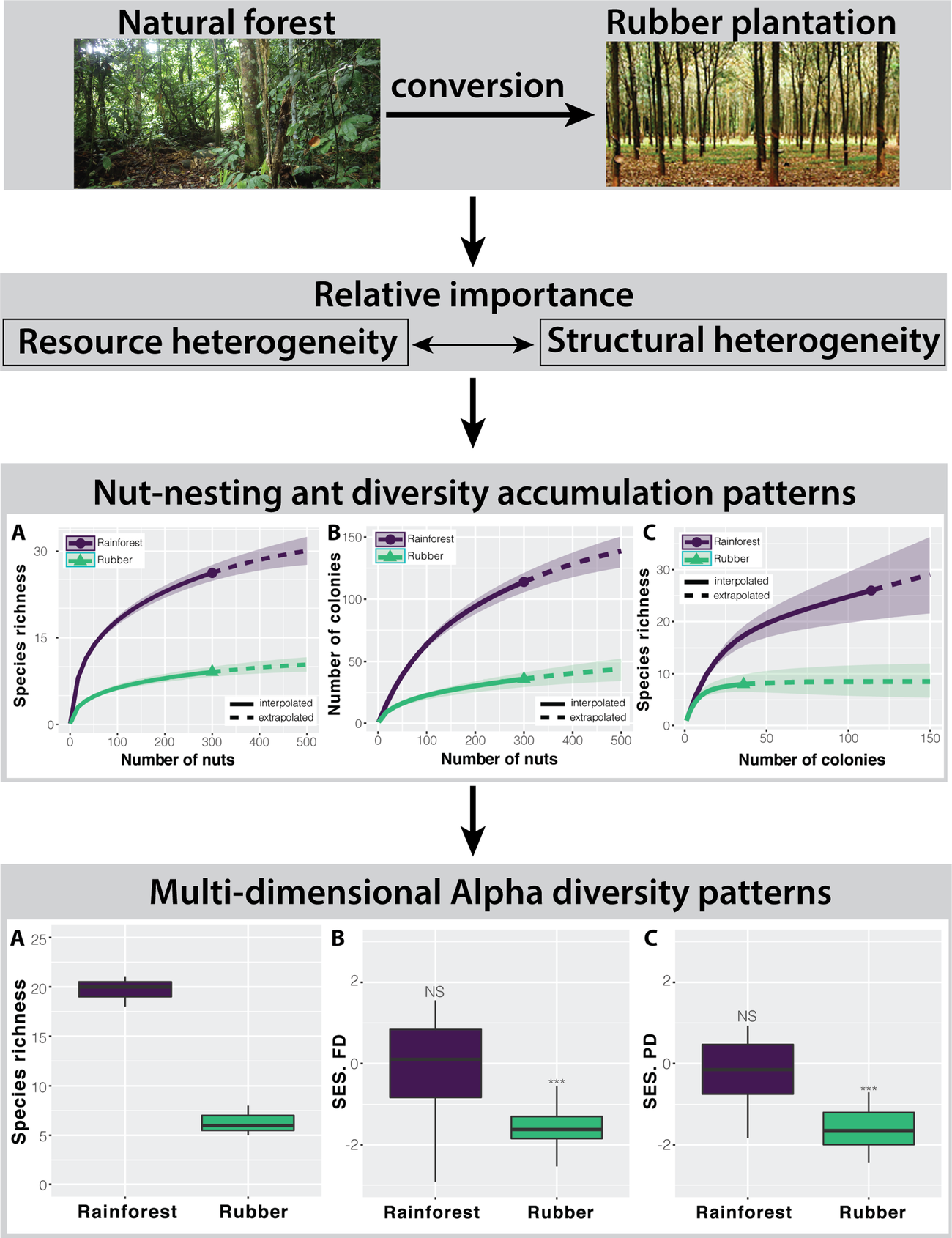Given the current high rates of biodiversity loss, understanding how environmental heterogeneity (including resource heterogeneity and structural heterogeneity) affects local insect biodiversity is becoming increasingly important. However, few studies have disentangled the effects of resource and structural heterogeneity on biodiversity.
In a recent study published in Insect Science, researchers from Xishuangbanna Tropical Botanical Garden (XTBG) and Harvard University investigated the effects of resource and structural heterogeneity on the biodiversity of nut-nesting ants in rainforest and rubber plantation in Xishuangbanna. They found that limited resource diversity was the main cause of biodiversity loss in nut-nesting ants following the conversion of rainforest to rubber plantation.
Resource heterogeneity refers to variation in the number of resources and might drive increases in diversity, especially in consumer-resource communities. By contrast, structural heterogeneity refers to variation in the physical structure of the environment and can promote diversity by allowing species to partition limiting resources.
The researchers analyzed the effects of resource and structural heterogeneity on the taxonomic, functional, and phylogenetic diversity of nut-nesting ants inhabiting rainforest and rubber plantation habitats following the conversion of rainforest to rubber plantation.
They found that species richness, functional diversity, and phylogenetic diversity were higher in rainforest than in rubber plantation, suggesting that environmental heterogeneity is an important determinant of local ant diversity.
‘The colonization rate of nuts in rubber plantation was 70% lower than that in rainforest, where nut diversity is higher. Higher species richness was observed in rainforest than in rubber plantation’, said Miao Baige, first author of the study.
Therefore, high resource heterogeneity (nut diversity) promoted and accounted for most of the variation in nut-nesting ant diversity.
The results show that decreased resource diversity following the conversion of rainforest to rubber plantation can drive biodiversity loss in nut-nesting ant, through its effect on reducing both ant species, functional, and phylogenetic diversity. The monoculture plantations not only reduce species richness but also simplify the functional and phylogenetic structure of the local community.
Contact
MIAO Baige
Key Laboratory of Tropical Forest Ecology, Xishuangbanna Tropical Botanical Garden, Chinese Academy of Sciences, Mengla, Yunnan 666303, China
E-mail: miaobaige@xtbg.org.cn

Diversity begets diversity: Low resource heterogeneity reduces the diversity of nut-nesting ants in rubber plantations. (Image by MIAO Baige)

